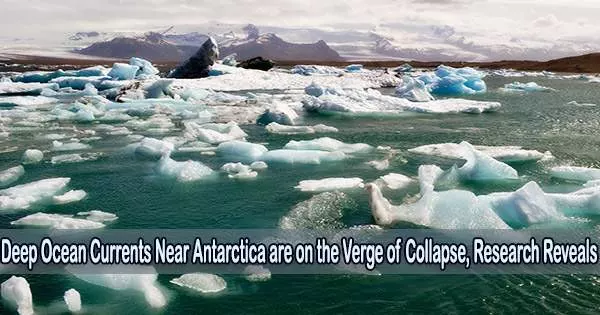“The deep ocean circulation that forms around Antarctica could be headed for collapse,” say scientists.
The stagnation of the ocean floor caused by this loss in ocean circulation will have long-term effects on the climate and marine ecosystems.
A recent study conducted by Scientia Professor Matthew England, Deputy Director of the ARC Centre for Excellence in Antarctic Science (ACEAS) at UNSW Sydney, describes the findings in depth.
The work, published today in Nature, includes lead author Dr. Qian Li formerly from UNSW and now at the Massachusetts Institute of Technology (MIT) as well as co-authors from the Australian National University (ANU) and CSIRO.
The deepest flow of the overturning circulation, a network of currents that covers the world’s seas, is driven by cold water that sinks close to Antarctica. Heat, carbon, oxygen, and nutrients are all transported around the world by the overturning. Climate, sea level, and the productivity of marine ecosystems are all impacted by this.
“Our modeling shows that if global carbon emissions continue at the current rate, then the Antarctic overturning will slow by more than 40 percent in the next 30 years and on a trajectory that looks headed towards collapse,” says Prof England.
Our study shows that the melting of the ice sheets has a dramatic impact on the overturning circulation that regulates Earth’s climate.
Dr. Adele Morrison
Modeling the deep ocean
About 250 trillion tons of cold, salty, oxygen-rich water sinks near Antarctica each year. This water then spreads northwards and carries oxygen into the deep Indian, Pacific and Atlantic Oceans.
“If the oceans had lungs, this would be one of them,” Prof England says.
The international team of scientists modeled the amount of Antarctic deep water produced under the IPCC “high emissions scenario,” until 2050.
The model includes how forecasts for glacial meltwater might affect the circulation and captures intricacy of ocean processes that earlier models have not been able to.
Although the Antarctic overturning has been largely constant for thousands of years, it is expected that over the next several decades it will dramatically slow down due to rising greenhouse gas emissions.
Impacts of reduced Antarctic overturning
With a collapse of this deep ocean current, the oceans below 4000 meters would stagnate.
“This would trap nutrients in the deep ocean, reducing the nutrients available to support marine life near the ocean surface,” says Prof England.
Co-author Dr. Steve Rintoul of CSIRO and the Australian Antarctic Program Partnership says the model simulations show a slowing of the overturning, which then leads to rapid warming of the deep ocean.
“Direct measurements confirm that warming of the deep ocean is indeed already underway,” says Dr. Rintoul.
The study discovered that when Antarctica’s ice sheet melts, the ocean waters nearby become less thick, slowing the Antarctic overturning circulation. With the planet’s temperature rising, it is anticipated that the melting of the Antarctic and Greenland ice sheets would quicken.
“Our study shows that the melting of the ice sheets has a dramatic impact on the overturning circulation that regulates Earth’s climate,” says Dr. Adele Morrison, also from ACEAS and the ANU Research School of Earth Sciences.
“We are talking about the possible long-term extinction of an iconic water mass,” says Prof England. “Such profound changes to the ocean’s overturning of heat, freshwater, oxygen, carbon and nutrients will have a significant adverse impact on the oceans for centuries to come.”
















